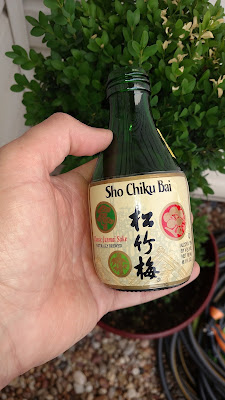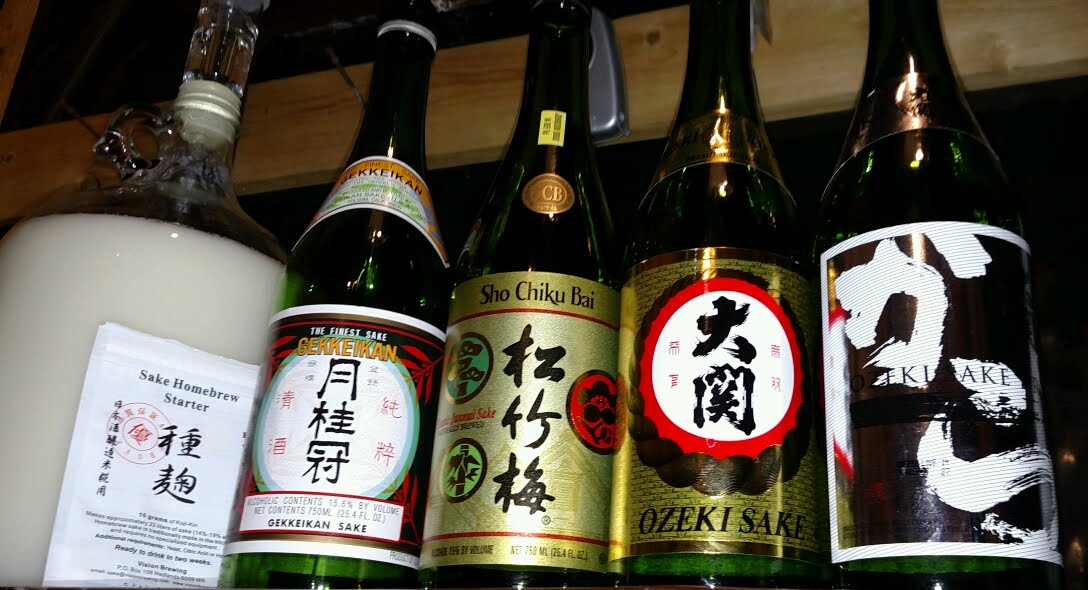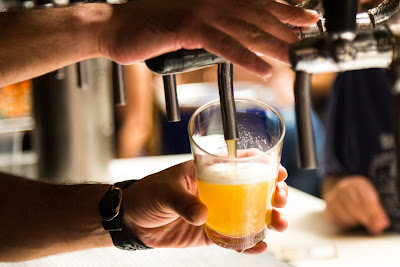Little Bottle of Sake!
On a recent trip to the grocery store, I found myself in the liquor section checking out the sake (again). This time, I spotted something different- little bottles of sake! These were Sho Chiku Bai brand sake which is a classic Junmai sake. The bottle size was 6.1 oz (180 ml) with an alcohol content of 15%. |
| Fun little 6 oz bottle of sake! |
I thought this could go one of two ways. A small bottle of sake could be really good, sort of like a good single serving bottle of craft beer. Or it could be really bad, like those cheap little plastic bottles of wine.
At least the bottles were glass, not plastic. I decided to get a couple little bottles of sake and find out for myself if they were good or not.
A few days later I was checking my beverage refrigerator for something to enjoy on a hot summer evening after dark. Beer seemed a bit heavy, especially the selection of double IPA's I had on hand. I decided to give one of the little bottles of sake a chance. It was on the top shelf of my beverage refrigerator, right next to the ice maker, so I knew it would be really cold. I decided to drink it right from the bottle like a bottle of beer.
As I covered in my last post, you can enjoy drinking sake at a range of temperatures. I prefer cold right now.
I was surprised how good this was! It was light and refreshing- just right. Drinking sake from the bottle was new for me, but quite enjoyable.
Next time I need to take an adult beverage to a summer gathering, I plan to pick up more of these. I will put them in a cooler on ice and serve them as cold as possible. The twist-off top will minimize the wait time- and warming up- between serving and drinking. This seems like a great way to introduce people to sake. I will make a point of letting people know that this has about 3x the alcohol of beer (15% for sake vs. about 5% for beer). But the bottle is sized proportionally, so a little 6.1 oz bottle of sake has about the same amount of alcohol as a 12 oz bottle of strong beer (like my double IPA's).
Pick up some of these little bottles of sake if you see them for a convenient and refreshing way to enjoy some sake or share it with people who have never tried sake.
Copyright © 2017 Dr. Oliver J. Kingsley. All Rights Reserved.







